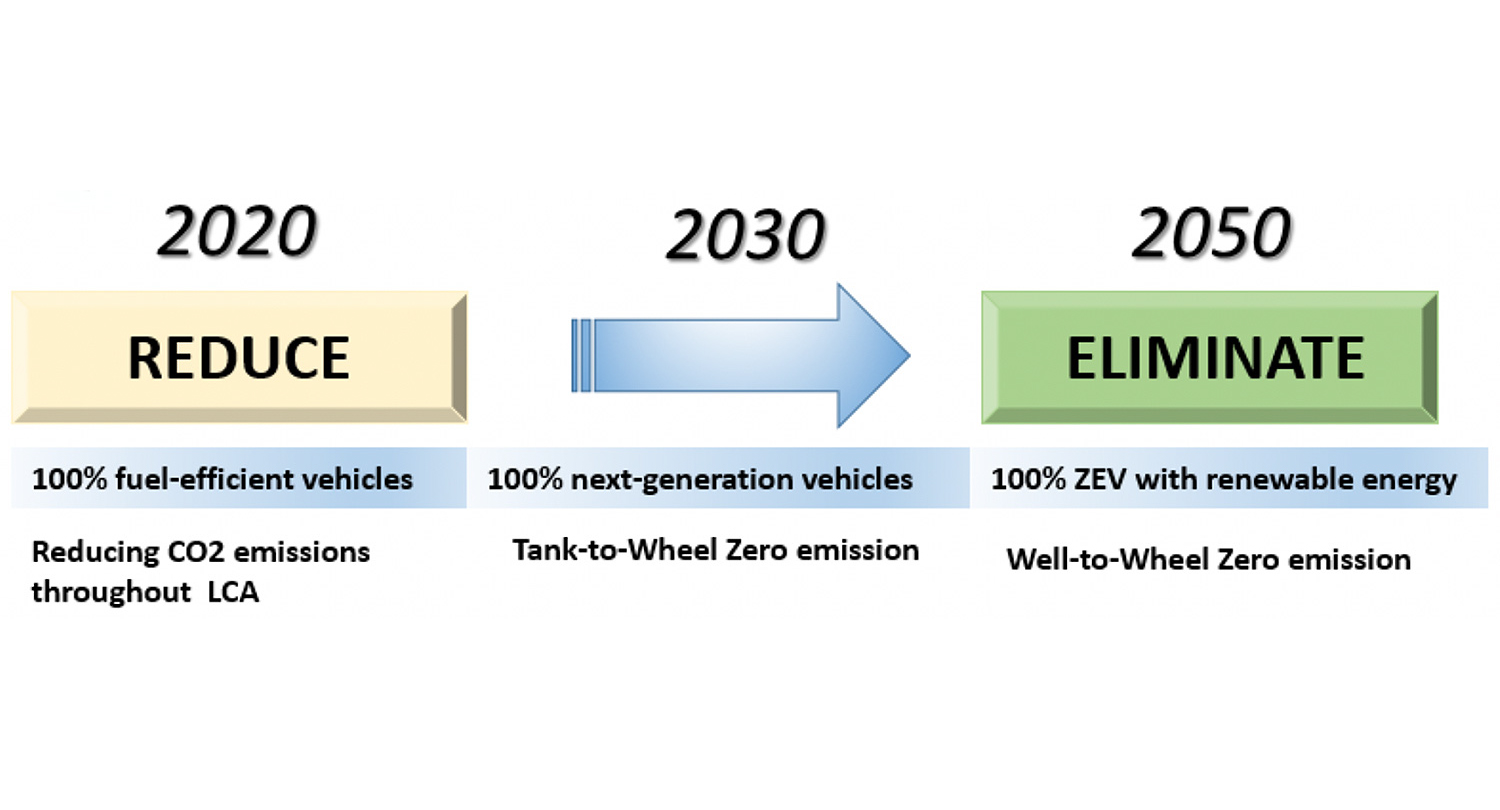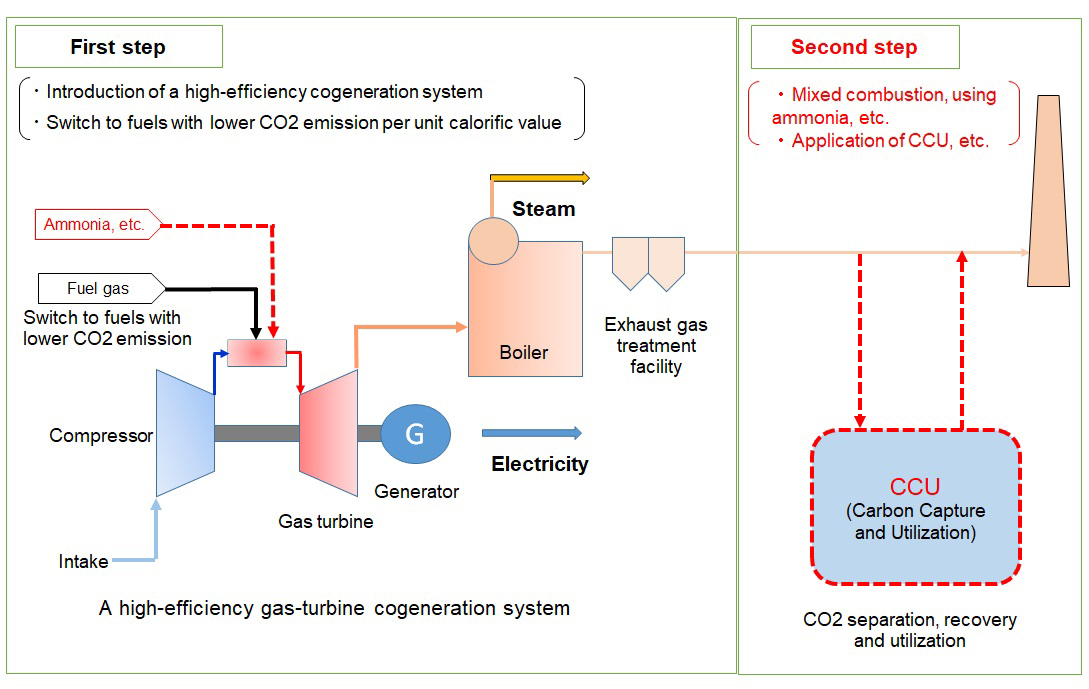Energy saving by expansion of new burner system
Daido Steel Co., Ltd.
Outline
In the background of CO₂ emission reduction, reduction of fuel‐consumption has become a key issue of heat treatment furnace. A typical example of existing energy-saving measures in heat treatment furnaces is the regenerative burner system (hereafter referred to as regeneration). However, regeneration has many problems such as high initial cost and increase of maintenance load, though large energy saving effect can be expected. Under such circumstances, expectations were raised for the appearance of simple and highly efficient energy-saving equipment.
In response to this need, we have developed a new high-efficiency and simple energy-saving combustion system (trade name: DINCS®) that utilizes 3D printing technology and the material properties of silicon carbide to achieve a reduction of 10.2 [%] in fuel consumption for heat treatment furnaces. Its energy-saving performance does not lead to regeneration, and its ease of remodeling and maintainability far surpass that of regeneration. We will challenge to reduce CO₂ emissions throughout the heat-treatment oven industries by disseminating and expanding DINCS®.
Description
One of the typical features of steel materials is "transformation," in which the crystal structure and structure change depending on the raising, lowering, or keeping of the steel material temperature. This transformation intentionally occurs, processability improvement of the material, heat treatment for tempering for the purpose of removal of distortion, etc., can be said to be indispensable steps to ensure the quality of the steel material. In the heat treatment step, it is important to perform the heating in a state where H2O), CO₂ is as small as possible with a O2 or a O2 on the chemical structure included in the environment around the metal material (atmosphere). This is because, when the steel is heated in an environment containing O2 molecules, the oxidation reaction between O2 in the air and Fe in the steel, and C in the steel is oxidized and leaked from the steel (decarburized).
The radiant tube combustion system with metallic heat exchanger (recuperator) is one of the heating equipment widely used in heat treatment furnaces. The burner is turned combustion in a tube made of heat-resistant cast steel called a radiant tube, and combustion is heated without mixing O2 molecules-containing exhaust gas into the furnace atmosphere. In addition, the exhaust gas sensible heat generated by the metallic heat exchanger installed on the exhaust side is recovered, and combustion air is preheated to improve combustion efficiency. This contributes to energy conservation. We have traditionally adopted this metallic heat exchanger, and the energy saving rate based on burners without heat exchanger is approximately 23%.
On the other hand, the concept of developing the new energy saving combustion system DINCS® is the following three points.
①Energy-saving performance equivalent to that of regeneration
②Simple configuration with excellent maintainability
③High compatibility with conventional burner systems
It is well known that regeneration boasts the best energy-saving performance among many existing combustion systems. One of DINCS® developmental concepts was to achieve energy saving performance comparable to this. And, the simple composition equivalent to the conventional burner system was aimed at in order to eliminate complicated machine structure and labor and cost of maintenance management which are disadvantages of regeneration. In addition, in order to enable users of existing furnaces to easily introduce DINCS®, commercialization was promoted with full consideration of compatibility with conventional burner systems.
Components of DINCS® are roughly divided into three: burners, high radiating materials, and high-efficiency heat exchanger. Changes from the conventional burner (metallic heat exchanger) system configuration are limited to heat exchanger configuration and the addition of highly radiating materials, and the simple system configuration is inherited. Regarding burners, consideration was given so that conventional ones can be diverted.
One of DINCS® components is the use of highly radiative silicon carbide as a material. By installing this high radiant material on the exhaust side of the radiant tube burner, sensible heat of exhaust gas is radiated heat transferred to the tube side through the high radiant material, and it becomes possible to efficiently reduce the sensible heat of exhaust gas discarded outside the system by the conventional system into the furnace. In addition, since silicon carbide also has high thermal shock, the risk of damage is small even if there is a rapid temperature change due to ignition and extinguishing of the burner, and maintenance due to deformation and exhaustion is hardly required.
In addition, another DINCS® component, the high-efficiency heat exchanger, is installed further downstream (exhaust) of the high-radiating material instead of the conventional metallic heat exchanger, and recovers the sensible heat of the exhaust gas by exchanging heat between the exhaust gas and combustion air. The material is silicon carbide as well as high radiation material, enabling high-efficiency heat exchange while compacting due to the high thermal conductivity of silicon carbide and the complex triple-helical construction realized by 3D printing technique. Like high radiation materials, it requires little maintenance.
In 2015, DINCS® was adopted for the first time. By replacing the conventional burner system with DINCS ®, we were able to confirm the significant energy savings of 10.2% per unit of fuel. As of August 2021, the company had delivered 700 new and existing furnaces, making a significant contribution to energy conservation in heat treatment furnaces.
More than 5,000 conventional burner systems have been installed in heat treatment furnaces we have sold, and there is considerable room for reducing CO₂ emissions by replacing conventional metallic heat exchanger with DINCS ®.In addition, we have recently remodeled our DINCS ® experimental facility for research, which enables us to evaluate energy-saving benefits by installing DINCS ® on non-our burners. By doing so, if DINCS can be adapted to heat treatment furnaces sold by various domestic and overseas manufacturers, it is expected that there will be more room for contributing. Through these efforts, we declare here the grand challenge of expanding the use of DINCS ® throughout the heat treatment industry, and thus meeting social demands to reduce CO₂ emissions.
Other Innovation Challenges
Enhancement of electric arc furnace with body rotation for energy saving in steelmaking industry
Daido Steel Co., Ltd.
Promoting low-carbon production through the widespread use of vacuum Carburizing furnaces
Daido Steel Co., Ltd.
Similar Innovation Challenges
Achieve 2050 decarbonization target with Net Zero Energy House!
Sekisui House, Ltd.
Achieving net-zero emissions by promoting renewable energy use through both our monozukuri and products.
DAIWA HOUSE INDUSTRY CO., LTD.






